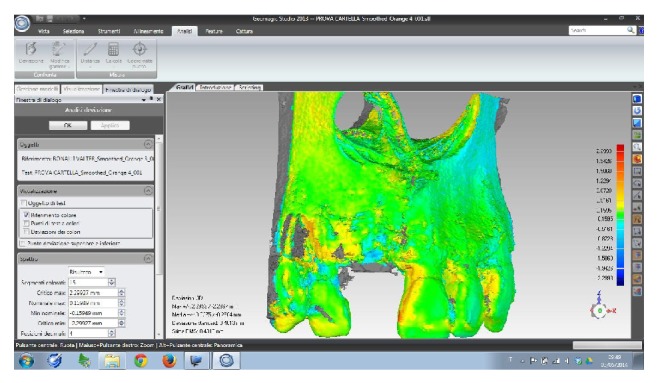Figure 25.

Overlapping of digital images. The DICOM (digital imaging and communication in medicine) files of the obtained CBCT datasets, 6 months and 2 years after grafting with synthetic, micromacroporous biphasic calcium-phosphate, were converted into a surface mesh model with digital imaging software (Mimics, Materialise, Leuven, Belgium). The two surface mesh models were then superimposed and rigidly aligned with anatomical landmarks, with the aid of a software for the overlapping of digital images (Geomagic Studio, Morrisville, NC, USA). The distance between the 2 surface meshes was presented as color-coded graded figures (blue: tissue loss; orange/red: tissue apposition; green/yellow: little or no modifications) to identify zones of bone resorption. In the frontal view, little or no buccal bone loss was evidenced, confirming the stability of the regenerated bone along time.
